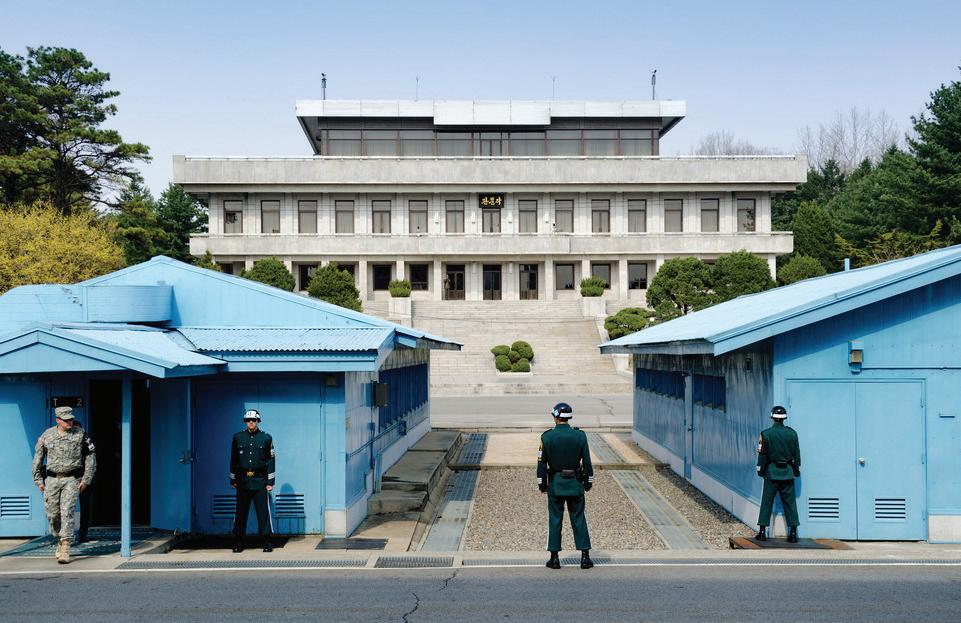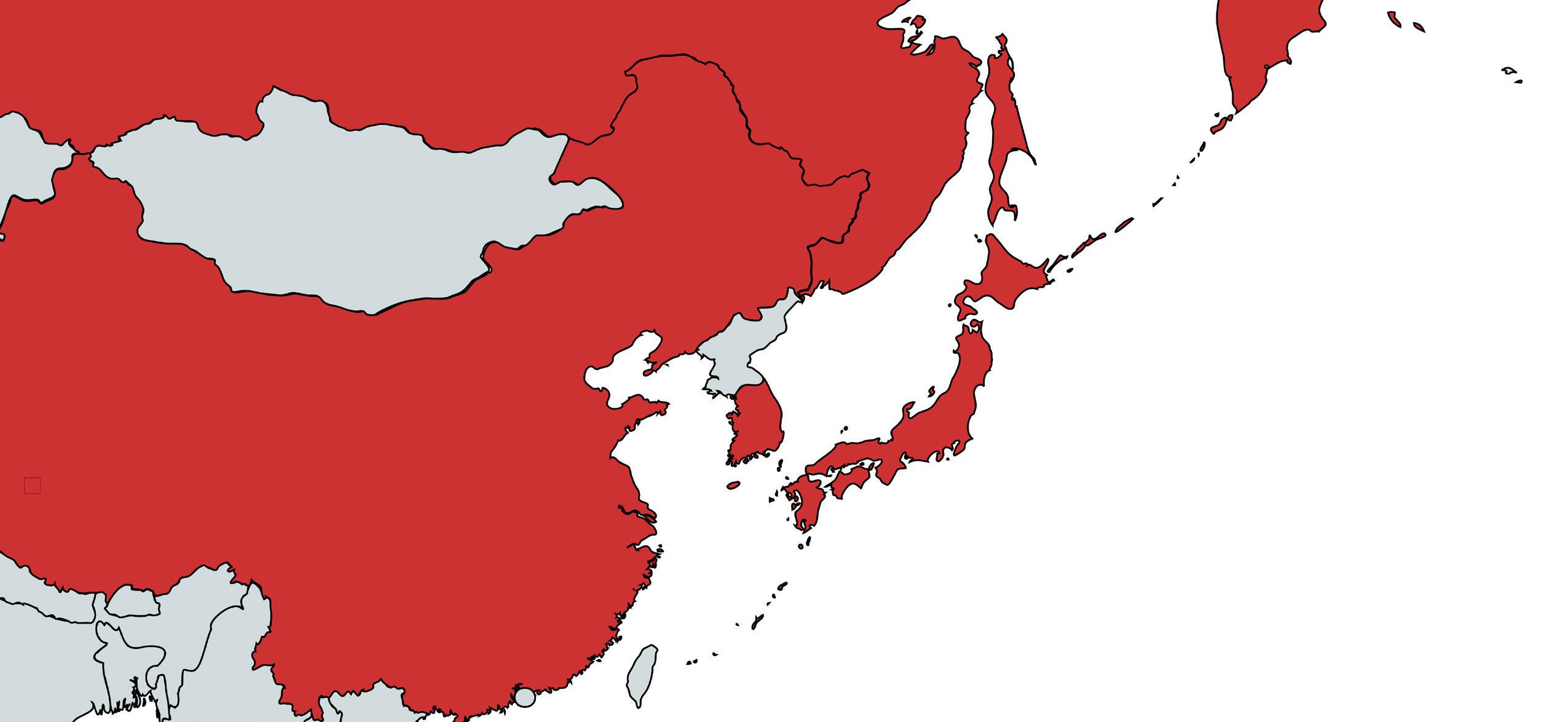
5 minute read
What does North Korea want?
Understanding North Korea’s posture in negotiations—in particular, what its ultimate aims are—is critical to choosing the appropriate policy levers to achieve denuclearization. As outlined above, there has been an apparent shift in how Kim Jong Un approaches the goal of regime survival, which requires a renewed analysis of the government’s long-term objectives.
Irrespective of any shift in strategy, there is broad consensus that Kim’s foremost priority is preserving the current regime—that is, maintaining a sovereign state under the control of the Kim dynasty. All other objectives of the regime, such as nuclear armament and economic development, serve to fulfill that goal. However, there remain significant disagreements as to how North Korea is likely to balance competing priorities. In particular, there is a great deal of uncertainty regarding the fundamental question in the current negotiations: is North Korea willing to give up its nuclear weapons program?
Considering the inherent uncertainty around the regime’s strategic calculus, the following presents the spectrum of prevailing views of North Korean interests on key subjects germane to the negotiations. This section does not attempt to divine Kim’s true intentions so much as to document that competing narratives and uncertainty exist.
Nuclear capacity
There are two primary opinions regarding how North Korea views its nuclear weapons program: as a means to an end or as an end in itself.
Those who believe that North Korea’s nuclear program is a means to an end argue that the Kim regime’s aim in acquiring nuclear weapons is to use those weapons as a bargaining chip to seek improved relations with hostile states. This interpretation of North Korea’s motivations maintains that Kim is willing to denuclearize in exchange for a fundamentally changed strategic relationship with the United States and concrete security assurances.
On the other hand, some argue that North Korea’s nuclear weapons program is an end in itself and that the regime sees possession of nuclear weapons as essential to regime security. According to this view, Kim has no intention or incentive to denuclearize. Rather, he is using negotiations to extract concessions from the international community while buying time for further weapons development.
HEADER
Missiles
North Korea increased missile testing throughout 2017, but there is little consensus regarding why.9 Some contend that North Korea sought to perfect its missile technology to strengthen its nuclear deterrent and demonstrate power domestically.10 Others believe that Kim’s decision to increase missile testing was aimed at the United States for one of two reasons. One possibility is that Kim hoped to capture U.S. attention and compel the United States to the negotiating table;11 another possibility is that Kim hoped to prove to the new administration the strength and advanced nature of his deterrent capacity.
Given the above, North Korea’s willingness to reduce its missile stockpile is unclear. North Korea has historically relied on missile technology exports as an important revenue source and
Caption: Kim Jong Un inspects soldiers Image Credit: The Daily Beast
9 Macias, A. (2018, March 14). North Korea Often Provoked Trump with Missile Launches During His First Year. Here Is a Timeline. CNBC. Retrieved from https://www.cnbc.com/2018/03/14/timeline-of-north-korea-missile-launches-in-trumpfirst-year.html 10 Berlinger, J. (2017, December 04). North Korea’s Missile Tests: What You Need to Know. CNN. Retrieved from https:// www.cnn.com/2017/05/29/asia/north-korea-missile-tests/index.html 11 Seo, Y., & Westcott, B. (2018, November 16). Kim Jong Un Tests ‘High-Tech’ Weapon in Message to the US. CNN. Retrieved from https://www.cnn.com/2018/11/15/asia/kim-north-korea-missile-kcna-intl/index.html
in past negotiations has demanded compensation for lost revenue.12 However, North Korea’s current, self-imposed freeze on missile testing and its dismantlement of a test site imply that Kim recognizes the salience of these issues and is ready to engage in talks.
Peace declaration
North Korea has publicly called for a peace declaration that would symbolically end the Korean War.13 It may be the case that a peace declaration is part of North Korea’s strategy to address the presence of U.S. troops on the Korean peninsula. Their presence is a legacy of the Korean War and the continued threat posed by North Korea and supports the U.S.-Japan and U.S.-South Korea alliances. As such, skeptics contend that North Korea, in seeking a peace declaration, hopes to build a case for removing U.S. troops from South Korea.
Alternatively, North Korea may simply desire improved bilateral relations with the United States and South Korea.14 According to this viewpoint, a peace declaration would be an important step toward reducing tension and building trust.
U.S. troop presence
How does North Korea view the approximately 28,000 U.S. troops in South Korea? The answer to this question depends on the regime’s perception of regional power dynamics. If the regime sees the presence of U.S. troops as a threat to its stability, it would seek troop withdrawal as part of any negotiations.
However, North Korea may consider the continued presence of U.S. troops on the peninsula as a check on Chinese power. China’s historical interference in North Korea and its expanded military activities might be seen as threats to the Kim regime’s sovereignty in the absence of U.S. troops. In this case, North Korea may prefer that U.S. troops remain on the Korean peninsula—provided that negotiations lead to a significantly improved U.S.-North Korea relationship.
Economic development & sanctions
To foster economic development, North Korea must, to some extent, integrate into the global economy for trade and bilateral investment. The main hindrance to this is the diverse and extensive set of sanctions currently placed on it by the United Nations, the United
12 Sullivan, K. (1998, June 17). N. Korea Admits Selling Missiles. The Washington Post. Retrieved from https://www. washingtonpost.com/wp-srv/inatl/longterm/korea/stories/missile061798.htm 13 Carlin, R. (2018, July 09). What the North Koreans Really Said on July 7. 38 North. Retrieved from https://www.38north.org/2018/07/rcarlin070918 14 Pak, J. H. (2018, September 17). The Real Reason Kim Jong-Un Wants to Declare an End to the Korean War. The Brookings Institution. Retrieved from https://www.brookings.edu/blog/order-from-chaos/2018/09/17/the-real-reason-kim-jong-un-wants-to-declare-an-end-to-the-korean-war
States, and South Korea.15 One of the regime’s top priorities is to receive sanctions relief in exchange for denuclearization steps.
According to experts on North Korea interviewed in Seoul, the Kim regime has several specific economic objectives. In the near term, the regime hopes to reopen and expand the Kaesong Industrial Complex, while resuming South Korean tours to Mount Kumgang and cultural exchanges. This would allow North Korea to earn foreign currency, as well as foster inter-Korean cooperation. North Korea also seeks immediate South Korean sanctions relief on maritime transportation. And finally, North Korea has emphatically demanded it receive at least some sanctions relief in the near-term, rather than as a delayed reward for denuclearization.
Aside from these immediate steps, North Korea’s medium- to long-term goals include complete sanctions removal; reparations from Japan for its 35-year occupation of the Korean peninsula; and foreign investment.
15 Albert, E. (n.d.). What to Know About the Sanctions on North Korea. CFR. Retrieved from https://www.cfr.org/ backgrounder/what-know-about-sanctions-north-korea






